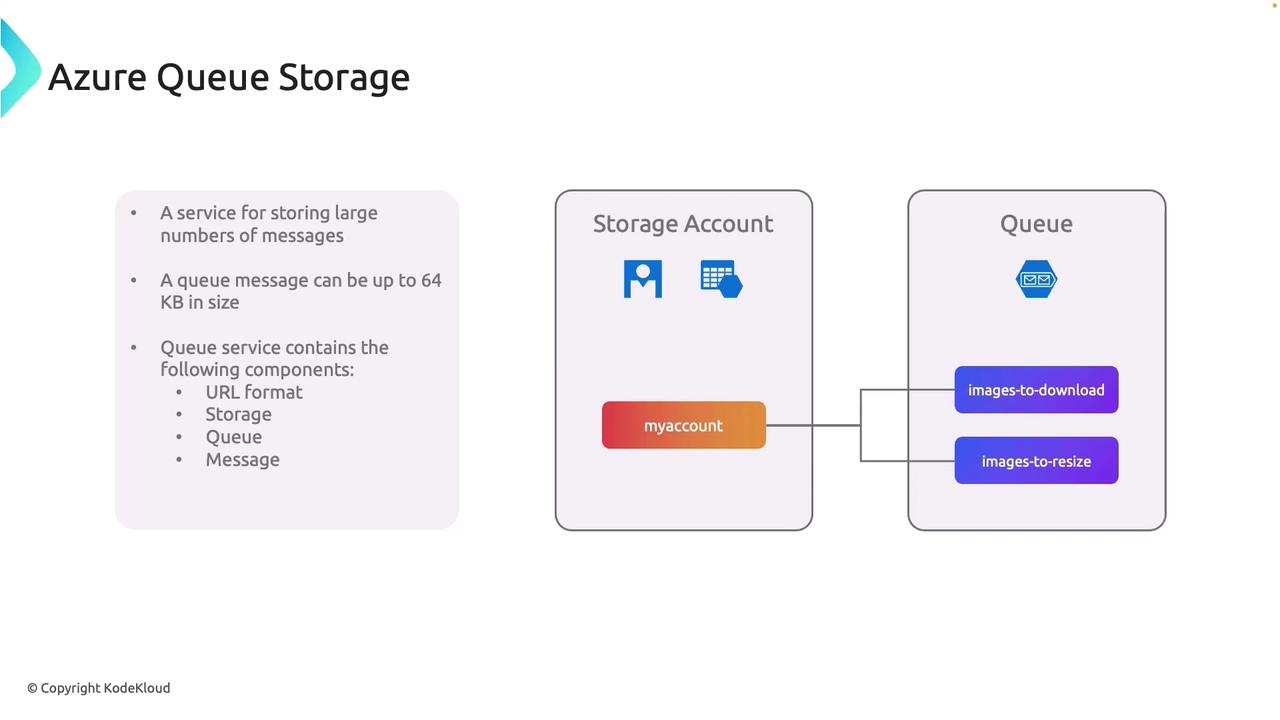AZ-204: Developing Solutions for Microsoft Azure
Discovering Azure Message Queues
Exploring Azure Queue Storage
Azure Queue Storage is a robust, scalable service designed for storing, managing, and processing high volumes of messages asynchronously. It's the ideal solution for decoupling application components and efficiently handling background tasks. With the capability to store individual messages up to 64 KB in size, Azure Queue Storage is perfectly tailored for managing metadata or small data chunks for asynchronous processing.
URL Format and Storage Structure
Azure Queue Storage organizes queues using a URL that follows this structure:
https://yourstorageaccountname.queue.core.windows.net/queueName
This URL format is quite similar to the one used by Azure Blob Storage. In Blob Storage, the URL contains "blob" along with both the container and blob names, whereas Azure Queue Storage incorporates "queue" and specifies the queue name at the end. This design ensures global accessibility via Microsoft Azure's resilient network.
It's important to note that every Azure storage service, including queues, exists under a storage account. The storage account acts as the root namespace and provides the security boundary for all your data—in this case, your queues.
Working with Queues and Messages
Within a storage account, you can create multiple queues to serve as containers for sets of messages. Each message can be added, retrieved, or deleted. Although Azure Queue Storage is designed to approximate processing messages in the order they were enqueued, it does not strictly enforce a First-In-First-Out (FIFO) sequence.
Messages in Azure Queue Storage support a variety of data formats—including JSON, XML, and plain text. Additionally, each message can be assigned a Time-to-Live (TTL) value that defines the duration for which it remains in the queue before it is automatically deleted. While the default TTL is set to seven days, this value can be modified based on your application requirements.
Note
Azure Queue Storage is particularly useful in distributed systems where decoupling and asynchronous processing help improve overall system scalability and resilience.
Example Scenario and Diagram
Consider a scenario where your storage account (e.g., "My Account") contains two distinct queues:
- One queue dedicated to "images-to-download."
- Another queue designed for handling "images-to-resize."

This diagram clearly illustrates how the storage account functions as the central container for queues, with each queue managing its own set of messages tailored for specific tasks.
Working with the .NET SDK
Understanding the core components of Azure Queue Storage paves the way for practical integration with your applications. In this section, we explore how to interact with Azure Queue Storage using the .NET SDK. Key topics include:
- Creating a storage account and initializing a queue.
- Adding messages to the queue.
- Retrieving and deleting messages from the queue.
By leveraging the .NET SDK, you can seamlessly integrate Azure Queue Storage into your applications, enabling scalable and asynchronous message processing.
Happy coding!
Watch Video
Watch video content